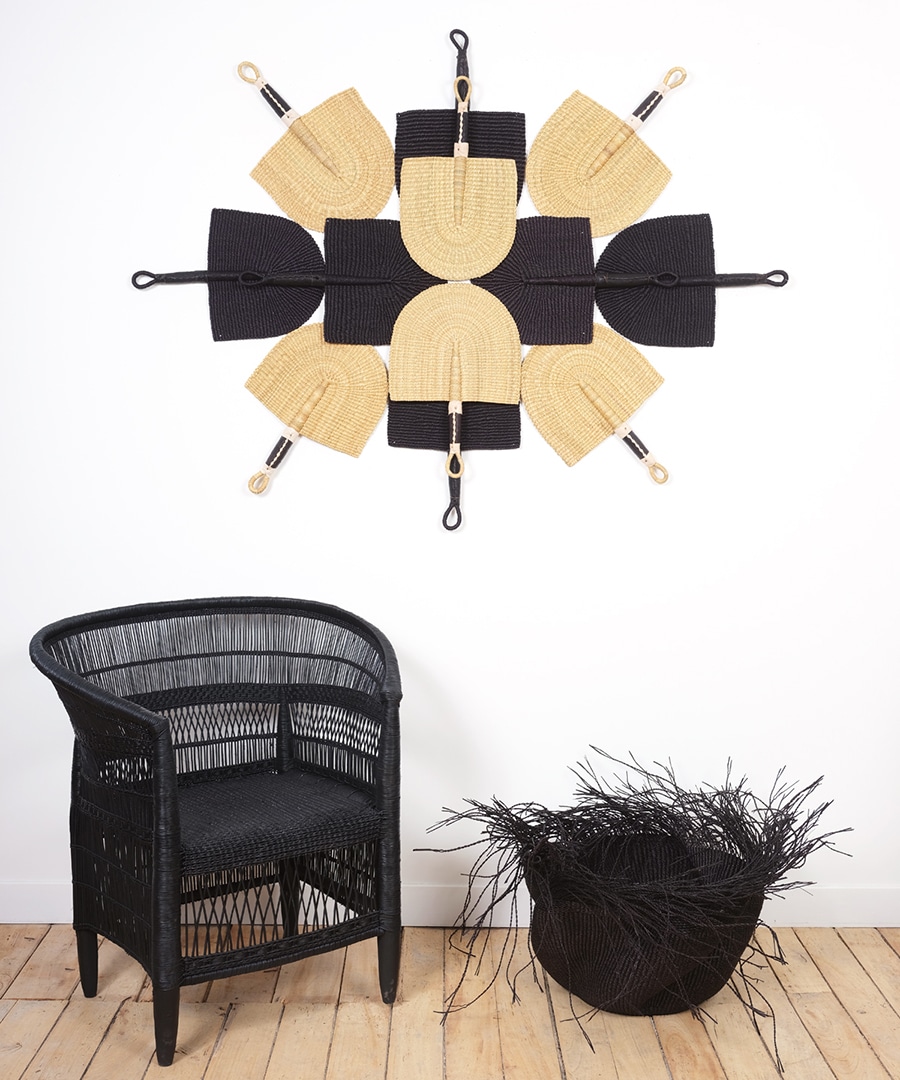Description
Old headrest
Banio/Me’en, Omo Valley, Ethiopia
Style 1A following Christian Bader’s classification (cf. text hereunder)
Wood, aluminium
Dimensions: H 19 cm, L 21 cm, W 15 cm
Headrests from East Africa
Among the Turkana of northern Kenya, or the Karamajong of southern Uganda, the headrest (or neckrest) is an accessory that a man never separates from. It is used to preserve his hair during nap or sleep. It has two feet with a leather lace between them, or it has only one foot and is then decorated with a leather or metal handle. The neckrests can be decorated with animal or geometric burned patterns. A man may travel several hundred kilometres to obtain a headrest from a renowned craftsman.
In Somalia, among the Afar, Boni and Somali, and in Ethiopia, among the Sidamo, Kambatta, Kaffa and Guragé, headrests are used by both women and men. Some are decorated with intricate geometric patterns, probably influenced by Islamic designs.
The headrests of the Horn of Africa have a surprisingly wide range of shapes. They are therefore wonderful collectors’ items. The use and the fat used for their care give them beautiful shiny patinas.
NOTE ON THE HEADRESTS FROM THE LOWER OMO VALLEY
Widespread throughout Africa, today the headrest only survives in a few isolated areas of the continent, particularly in the area where the four borders of Ethiopia, Kenya, Uganda and South Sudan converge. In the Lower Omo Valley, Ethiopia, the peoples of the region continue to make these objects, and to use them daily. The headrest is an emblematic object of the material culture of these peoples of Cushitic, Omotic and Surmic languages, who have been culturally influenced to varying degrees by the great paranilotic peoples, such as the Karamojong of Uganda, the Turkana of Kenya and the Toposa of South Sudan.
It would have been perfectly appropriate to classify the different varieties of headrests in use in the Lower Omo Valley according to the shape of their platforms, supports and bases, to define a kind of regional typology of the object, giving more importance to its form, rather than to its ‘identity.’ Classification by language family, however, was preferred. This choice tries to place the object in the ethnographic environment from which it is derived as precisely as possible, and which neither art dealers: nor the authors of most books on headrests, wanted to show – perhaps because most often they are simply ignorant of the exact provenance of items they offer for sale or for the admiration of readers. This “ethnographic” classification has merit, I think, in recognising, not so much the functionality of the headrest, but its primary function, affirm identity. The headrest does not only affirm the identity of its owner, of whom it is to a certain degree the material extension, but also the community from which it came.
Surmic Peoples (Bodi Me’en and Tishana, Mursi (Mun), Chai and Tirma, Suuri or Baale)
The Surmic circle includes around ten ethnic groups, that were little known for a long time, who have established themselves in the least accessible regions of the lower Omo Valley and the Ethio-Sudanese border areas. In Ethiopia, this Surmic circle, whose most spectacular feature is the size of the terracotta or wood labrets worn by women in some ethnic groups ( the famous “lip plate women” made famous by image merchants), is represented by five groups: the Me’en divided into Bodi (breeders) and Tishana (farmers) and four groups that are culturally very close: the Mursi (or Mun) from the left bank of the Omo, the Chai and Tirma ( collectively called “Surma”) on the far bank of the Omo and the Baale, called Suuri or Kachipo in South Sudan.
Within the Surmic circle, the headrest is much less widespread than among ethnic groups in the Hamar circle or the Paranilotics (and the Nyangatom). Mainly reserved for elders, it has a purely functional purpose, essentially serving as seat (indeed, men of these ethnic groups pay hardly any special attention to their hair and often shave it off) and is not associated with any special rituals.
The most “typical” headrest from this circle is the one that has been spread by the Me’en Tishana; for more than a century, they have maintained close contacts with the populations of the highlands of Ethiopia, but these have not always been peaceful. Called chakkam, the headrest is formed of a large oval or nearly round platform, which is flat or slightly curved, often tapered or lobed (in a figure of eight), with a high hemispherical base or an oval, flat base which is sometimes secured in place by a piece of plastic cut from a sole, and, between these two elements, a variable form of structure. This structure is either a flattened post, which is quite thick, straight or flared upwards, which appears to be the original form (Surmic, style 2) and which is found on the older headrests; or four square section pillars (Surmic, style IA); or, rarely, two (Surmic, style 1 C) or three pillars (Surmic, style lB). Other than pyrographed dots or small brass discs, the chakkam, which is mostly carved out of reddish wood and rarely out of darker species, is usually fairly sparsely decorated. Thus, with the Tishana people, the handle is made of a thin metal rod (Surmic, style 4, 5 and 6), a simple string or, more rarely, wood (Surmic, style 3).
Christian Bader
Diplomat (currently ambassador of France in Equatorial Guinee, a former ambassador in the new independant state of South Sudan), ethnologist and linguist, author of several books on the people of East Africa.
From « Note sur les appuis-tête de la basse vallée de l’Omo » in Appuis-Nuque de la Corne de l’Afrique, Odilon Audouin, Toguna, 2016




